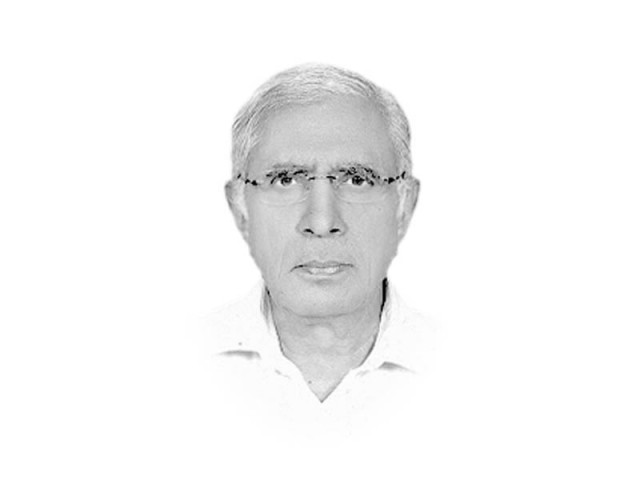Intriguing data
Come September, Pakistan would be ‘ready to go at it alone’ without the crutches of the IMF

The writer served as Executive Editor of The Express Tribune from 2009 to 2014
Growth rate pretty much the highest of all the countries in the region? Well, then we will have to remove from the region China and India because the economies of the two grew at over seven per cent last year and include in it only the war-ravaged Afghanistan and the much-sanctioned Iran whose economies during the same period grew at 2.1 per cent and 3.7 per cent, respectively, against Pakistan’s 4.2 per cent to make it appear that our growth rate was the highest in the region. But then if Pakistan’s growth rate at 3.5 per cent, calculated by independent economists for the last year is considered as nearer the truth than the official figure, it would seem the growth rate of our economy could edge past only that of Afghanistan.
The budget deficit halved? Well, the government has simply taken the circular debt amounting to Rs329 billion out of the budget to show that budget deficit has been halved. Mr Ahmad says Pakistan has built up its reserves, implying that the country has enough foreign exchange reserves to pay for its imports on its own without asking the Fund or any other bilateral or multilateral donor for a handout to cover the bill. But then most of the reserves are said to be made up of borrowing, which has added a liberal touch of uncertainty to our ability to meet, in crunch time, our loan repayment obligations or those of our import bill outstandings.
The current level of exports “which is about $25 billion”? Well, the current level of exports is hardly $19 billion, which is almost $6 billion short of the Fund’s estimates and this disappointing performance of our exports over the last two years has almost doubled our worries concerning keeping the foreign exchange reserves reasonably healthy without the need to borrow and also meet our import bill from these reserves rather than from borrowings.
Mr Ahmad believes Pakistan has “completed to a large measure the stabilisation agenda that this programme (the three-year Extended Fund Facility amounting to $6.7 billion) was supporting”. But then, according to independent economists, by the last review, Pakistan is said to have received a many as 14 waivers and the privatisation part of the programme has been completely shelved. No matter how the Fund programme has spun out over its life and no matter how much of economic stabilisation it has helped the country to achieve, the fact that after September, Pakistan is not likely to go back to the IMF for a new stabilisation programme in itself is going to be a welcome development, not because the outgoing programme has helped us to stand on our own feet but because liberated from the Fund-prescribed tight monetary and fiscal policies, the national economy is expected, for a change, to breathe freely and enable policymakers to kickstart the economy.
For too long, our economy has remained in a stagnation mode. In order to get out of this mode, we need to increase our investment-to-GDP ratio to at least 20 per cent against the current ratio of 15 per cent. The CEPC is expected to add 2.8 percentage points to the ratio bringing it nearer to the target. Meanwhile, before the annual budget is announced, the federal government needs to announce the 8th NFC Award and the provinces would need to announce their respective provincial finance commission awards so that the elected local governments are financially empowered to take in hand the much-needed and long-delayed development projects at the grass roots.
Published in The Express Tribune, April 30th, 2016.
Like Opinion & Editorial on Facebook, follow @ETOpEd on Twitter to receive all updates on all our daily pieces.














COMMENTS
Comments are moderated and generally will be posted if they are on-topic and not abusive.
For more information, please see our Comments FAQ